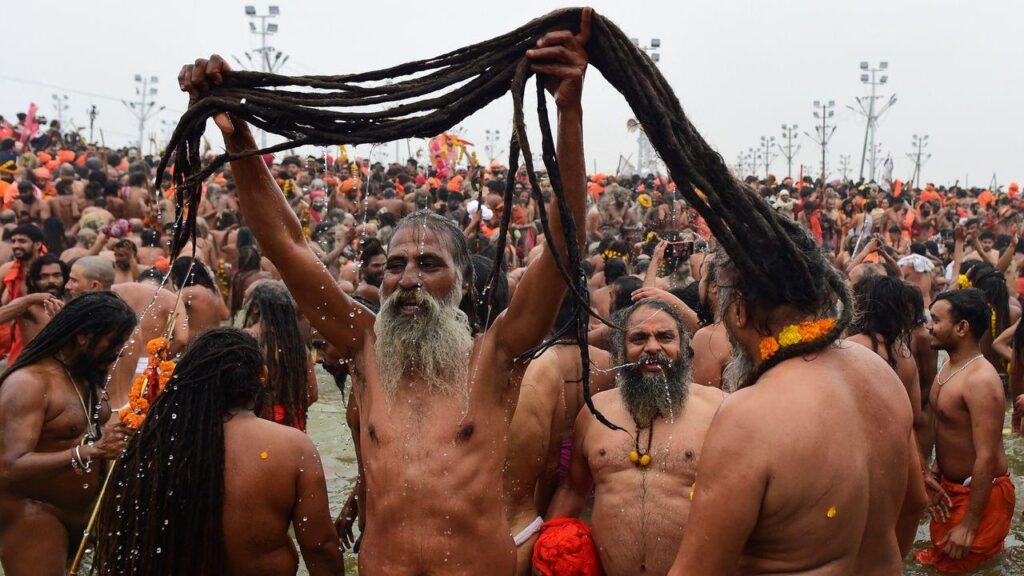In the heart of India, where centuries-old traditions converge with spiritual fervor, a remarkable spectacle unfolds. As dawn breaks over the sacred rivers, millions of pilgrims gather, their collective faith creating a human tapestry that stretches beyond comprehension. The Maha Kumbh, a celestial confluence of devotion and ancient ritual, witnesses over 20 million souls performing a holy dip that transcends mere physical cleansing—it is a profound spiritual renewal, a moment where humanity connects with the divine in a breathtaking display of cultural unity. In a breathtaking display of spiritual devotion, millions of pilgrims converged at the sacred confluence of rivers Ganges, Yamuna, and Saraswati during the world’s largest religious gathering. The Maha Kumbh Mela transformed the landscape into a vibrant sea of humanity, with participants from diverse backgrounds united in a profound spiritual experience.
Devotees emerged before sunrise, their bodies adorned with sacred markings and draped in traditional attire, creating a mesmerizing visual spectacle. The ritualistic holy dip, known as “shahi snan,” represents a transformative moment of spiritual cleansing and redemption, deeply rooted in ancient Hindu traditions.
Religious leaders and saints led massive processions, their saffron-colored robes creating a striking contrast against the dawn’s soft light. Elaborate ceremonies marked each significant bathing moment, with rhythmic chants and ceremonial bells echoing across the riverbanks.
Elaborate camps sprawled across hundreds of acres, accommodating millions of pilgrims from various regions. Each section represented different spiritual traditions, showcasing India’s rich cultural diversity. Temporary infrastructure including medical facilities, communication networks, and security arrangements supported the massive congregation.
Anthropologists and researchers documented this extraordinary event, highlighting its cultural significance beyond religious boundaries. The gathering represented more than a mere ritual—it symbolized collective spiritual consciousness and communal harmony.
Local and state governments deployed extensive resources to manage the massive crowd. Thousands of police personnel, medical teams, and volunteers worked meticulously to ensure participant safety and smooth event management.
International observers marveled at the organizational complexity of coordinating such an unprecedented human gathering. The event demonstrated remarkable logistical planning and cultural cohesion, attracting global attention.
Spiritual leaders emphasized the event’s deeper philosophical meaning, describing the holy dip as a metaphorical journey of inner transformation. Participants believed the ritualistic immersion would absolve them of spiritual impurities and generate positive karmic energy.
Economic implications were significant, with local businesses experiencing substantial economic boost. Hotels, transportation services, and local vendors benefited tremendously from the massive influx of pilgrims.
The Maha Kumbh Mela transcended ordinary religious observance, representing a powerful testament to collective human spirituality. It showcased India’s profound traditional wisdom, drawing participants from diverse socio-economic backgrounds into a unified spiritual experience.
As millions completed their sacred ritual, the atmosphere resonated with collective energy, hope, and spiritual renewal—a timeless tradition continuing to inspire generations.
